Top 10 Famous Ganesh Pandals: Beauty, Themes & Story
Famous Ganesh Pandals: Ganesh Chaturthi has always been a special place for Hindu devotees. This is celebrated around India with…
 0%
0%

Hand Mudras for Meditation: Going through stress? Meditation is the best way to relieve stress and concentrate on your happiness. A lot of people know that meditation can calm and give clarity to their lives.
But you can not have realised that different hand positions, or we say mudras, can heighten meditation sessions and give a focal point for concentration.
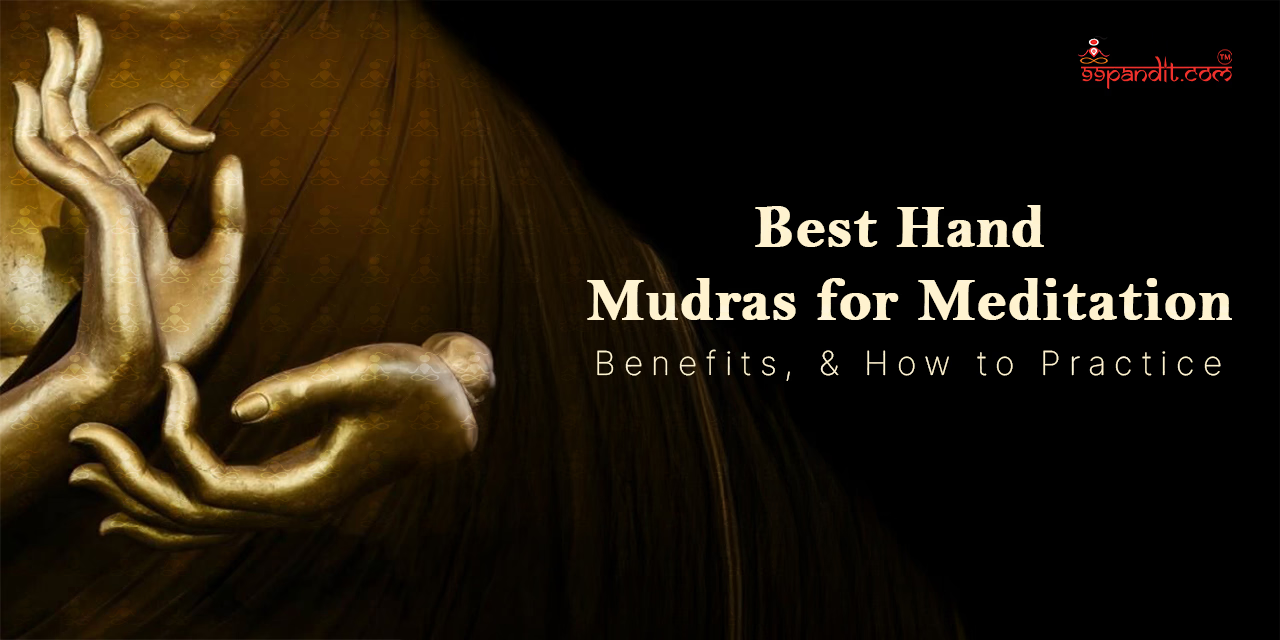
Hand positions are considered to impact the flow of energy within the body system to promote physical, emotional, or spiritual recovery.
While you’re stepping into meditation for the first time or based on your existing practice, mudras can add new meaning and connection.
Mudras, or hand positions, in other words, are derived from Sanskrit, which means ‘gesture’ or ‘seal’, are the signs of hand positions which used in yoga and meditation.
All of it mudras include the positions of the fingers and hands in particular ways to lead the flow of energy within the body, simplifying physical, mental, and spiritual well-being.
These mudras are usually practiced alongside pranayama and meditation to increase the practitioner’s experience and encourage holistic health.
According to ancient tradition, positioning the hands and fingers in precise ways is thought to produce internal energy in areas that require healing or energizing.
The manipulation of prana is considered to help stabilize the body’s elements and chakras, potentially leading to enhanced health and elevated consciousness.
During meditation, these mudras are utilized as focal points to support calming the mind, focusing on breathing, and entering deeper states of concentration.
Keeping right-hand positions may help to strengthen the feeling of connection to the self and the universe.
By getting hand gestures into your practice, you open yourself to multiple potential benefits.
Each finger shows one of the five elements:
Using hand mudras in your meditation routine can change your experience, giving multiple physical, mental, and spiritual advantages.
These ancient positions provide a simple yet effective way to increase your journey toward inner peace and holistic well-being.
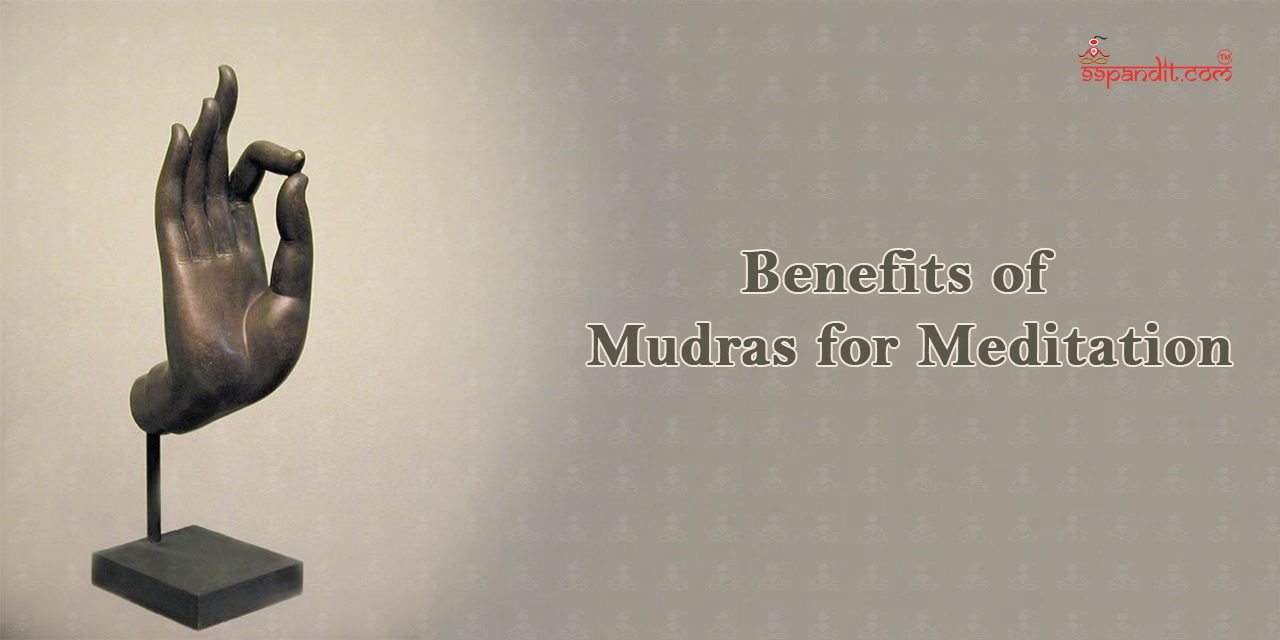
Let’s see the helpful benefits of using hand positions for meditation.
Hand mudras can mainly help to improve concentration during meditation or yoga. By making detailed gestures with your hands, you create a physical anchor that helps to calm the mind and manage attention on your practice.
The increased focus enables stronger meditative states and more deeper inner experience.
All mudra positions aim for multiple elements and energies within the body, guiding to recovery, balance, and harmony.
For example, the Gyan mudra, which links the thumb and index finger, enables the air element and improves mental clarity.
Performing these gestures can modify elemental imbalances, boosting overall well-being and health.
The gestures are highly connected to the spiritual parts of yoga and meditation. The anjali mudra, or prayer position, represents gratitude and reverence, boosting a stronger spiritual connection.
Practicing the mudras can increase the experience, leading to spiritual growth, deepen awareness, and a deep connection to the universal consciousness.
Significant mudras can support physical healing and enhance bodily functions. For instance, the prana mudra, created by touching the ring tips and pinky fingers to the thumb, enhances vitality and strengthens the immune system.
Continuous practice of mudras can improve circulation, digestion, and overall physical health.
Hand gestures are an effective way to manage stress and boost stability. The Shuni mudra, made by touching the tip of the middle finger to the thumb, is called to encourage patience and calmness.
Performing these mudras in your meditation practice, you can relieve stress, anxiety and obtain a state of calm mind.
Practicing with mudras at the time of meditation can achieve new experiences and understanding.
Each mudra has its own purpose, enabling you to adhere to your method for your requirements and intentions.
The first one is Gyan mudra, which is called the mudra of knowledge. This is one of the most basic mudras in yoga or meditation.
It shows wisdom, receptivity, and peace, improving concentration and mental clarity.
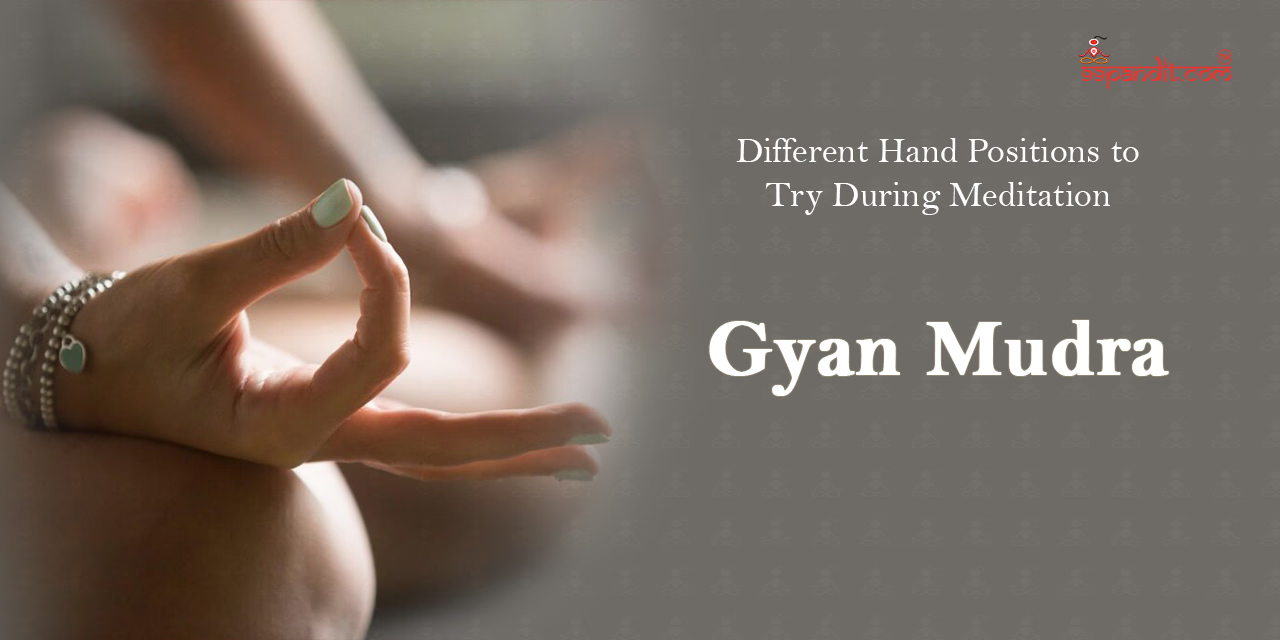
Such a gesture is considered to connect performers to their deeper consciousness, promoting a state of meditation.
How to do it:
The next one is the Dhyana mudra, which shows concentration, serenity, and internal reflection.
This is considered to help the performer obtain a calm state of meditation and religious awareness.
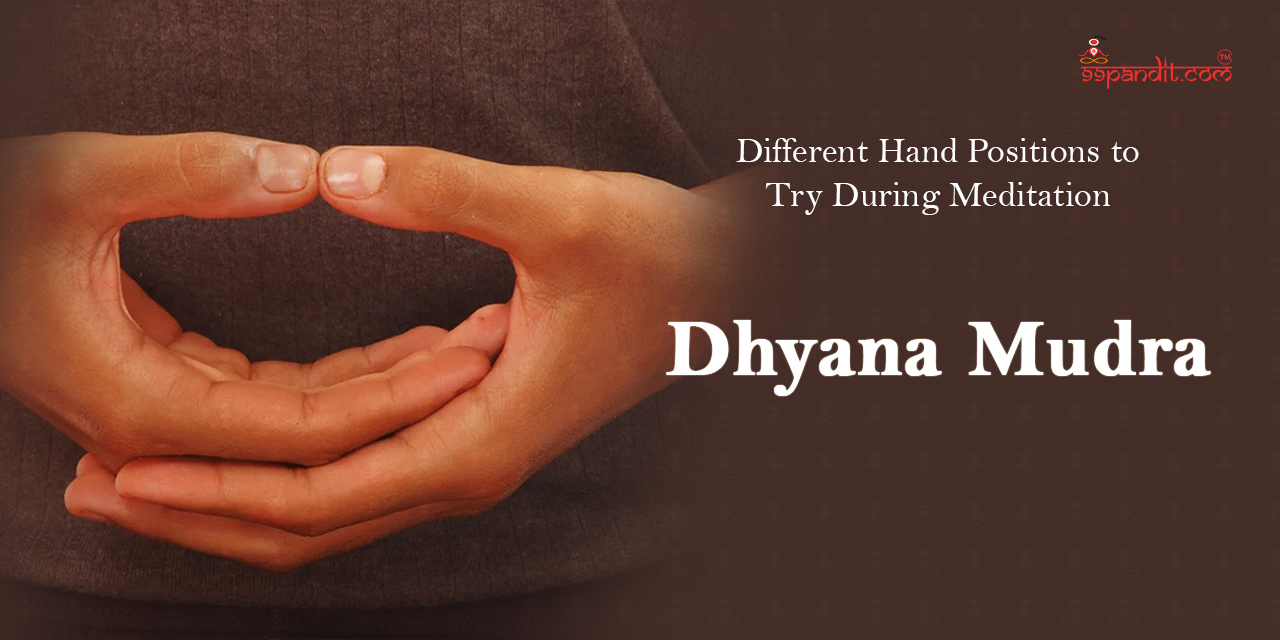
It’s often connected with the Buddha, who is highly recognized with his hands in this position while concentrating.
How to do it:
The ‘Mudra of life’, Prana mudra, is one of the effective hand gestures for meditation to boost and balance the body’s vital energy, or prana.
The word Prana means in the Sanskrit language for life force or vital energy, which is important for physical, mental, and spiritual welfare.
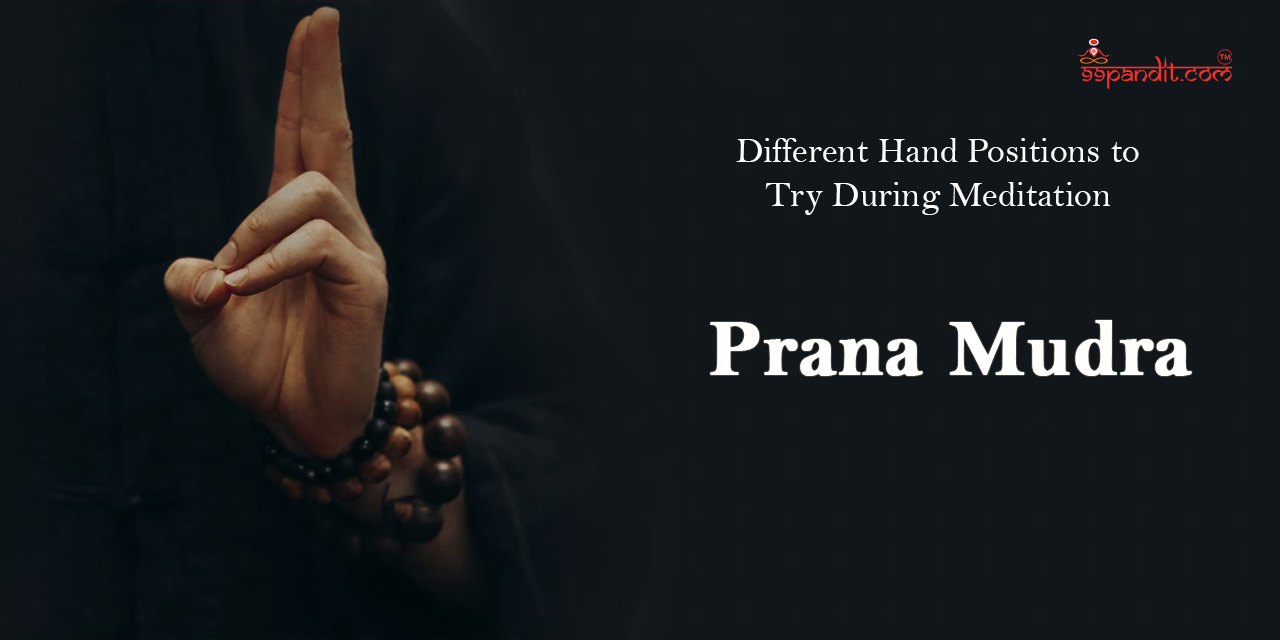
The prana mudra is considered to awaken dormant energy in the body, enhance vitality, and strengthen the entire immune system.
How to do it:
Vayu mudra is usually called as ‘Gesture of Air’, which is a precise mudra used in yoga and meditation to maintain the air element within the body.
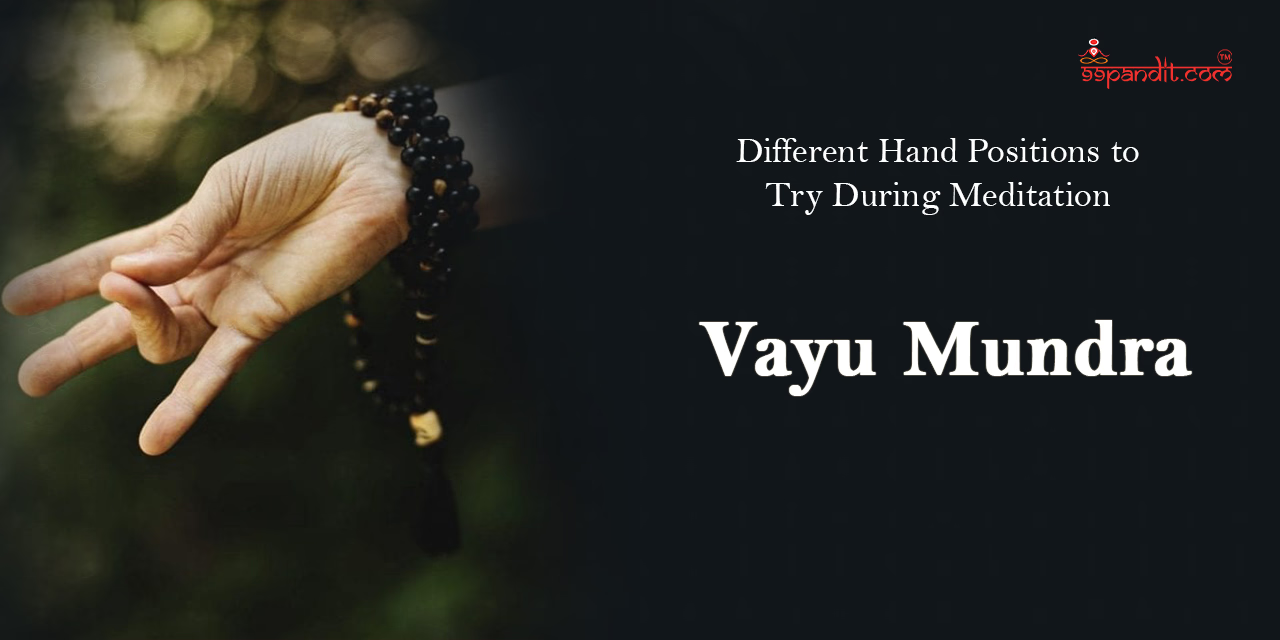
The gesture helps to control and stimulate the air elements, that is connected with movement, energy, and the nervous system.
How to do it:
Buddhi mudra is another one that is used in yoga or while concentrating to improve mental clarity, enhance concentration, and promote a balanced mind.
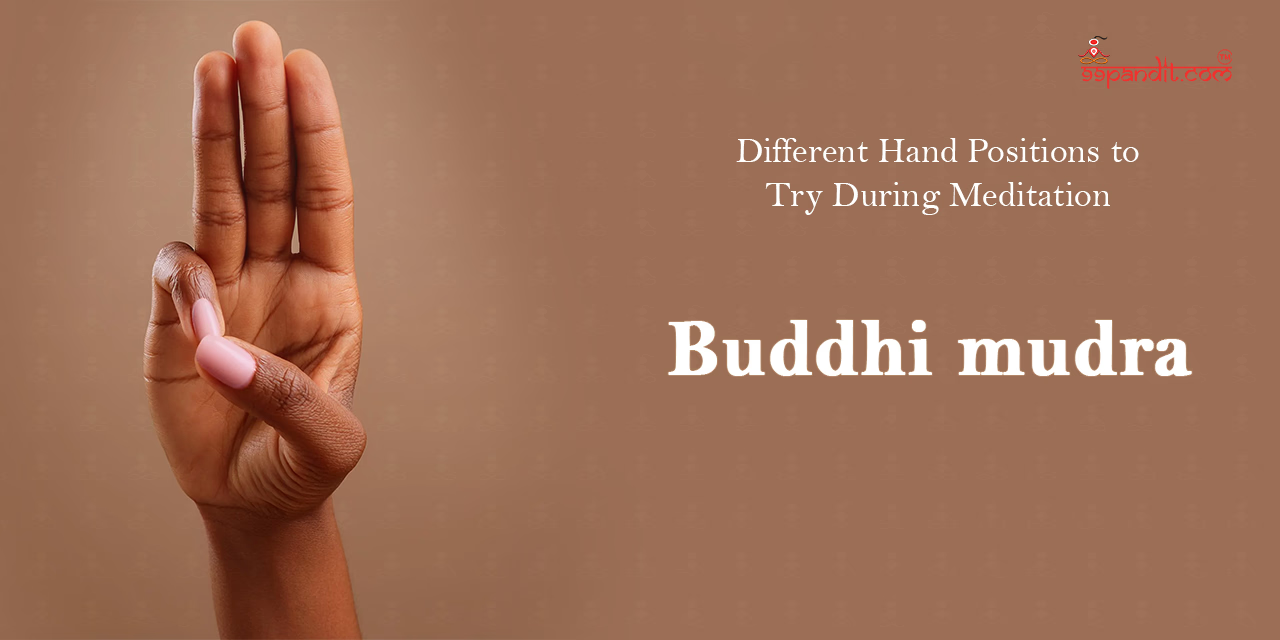
The word buddhi means intellect and wisdom in Sanskrit, showing the mudra’s purpose of improving cognitive features.
How to do it:
Vajrapradama mudra is performed for unshakeable trust. This is grounding and heart-centred.
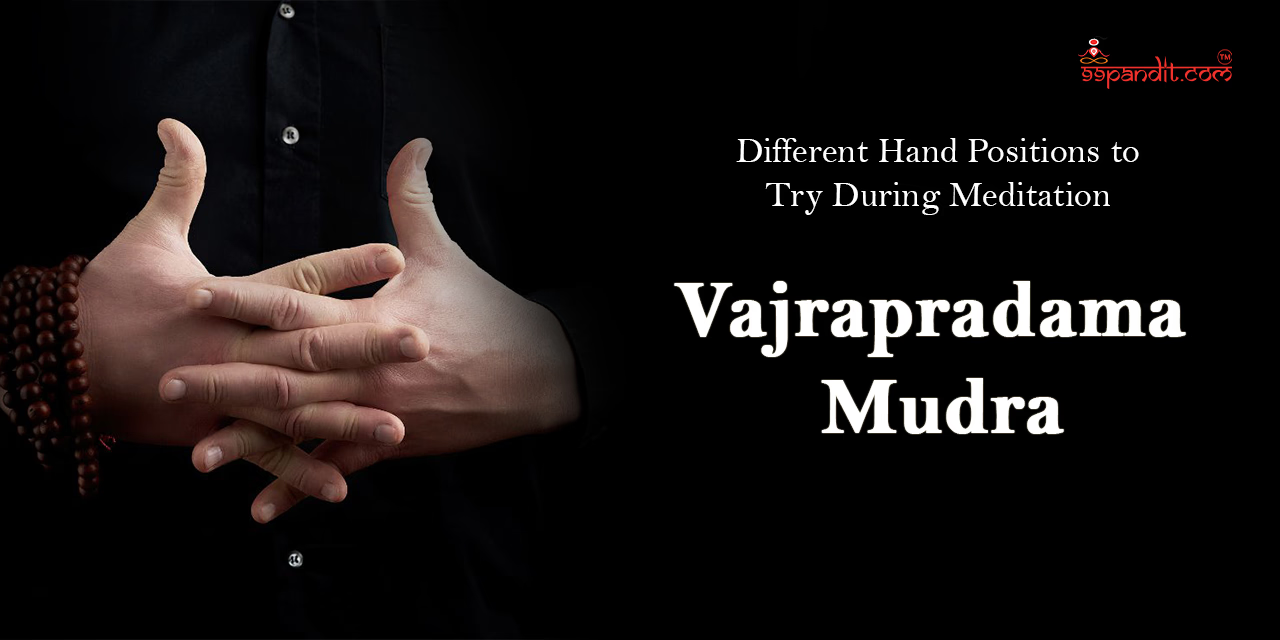
It quiets the nervous system and supports finding and trusting the heart’s wisdom. It is mainly potent during times of complexity and frustration.
How to do it:
Keep your hands in front of your heart and interlacing your fingers, and rest your open palms over your heart.
Hindu legends are usually identified with this ‘boon-granting’ gesture, consider Lakshmi and her golden coins. This position for meditation feels kind and loving, and generous.
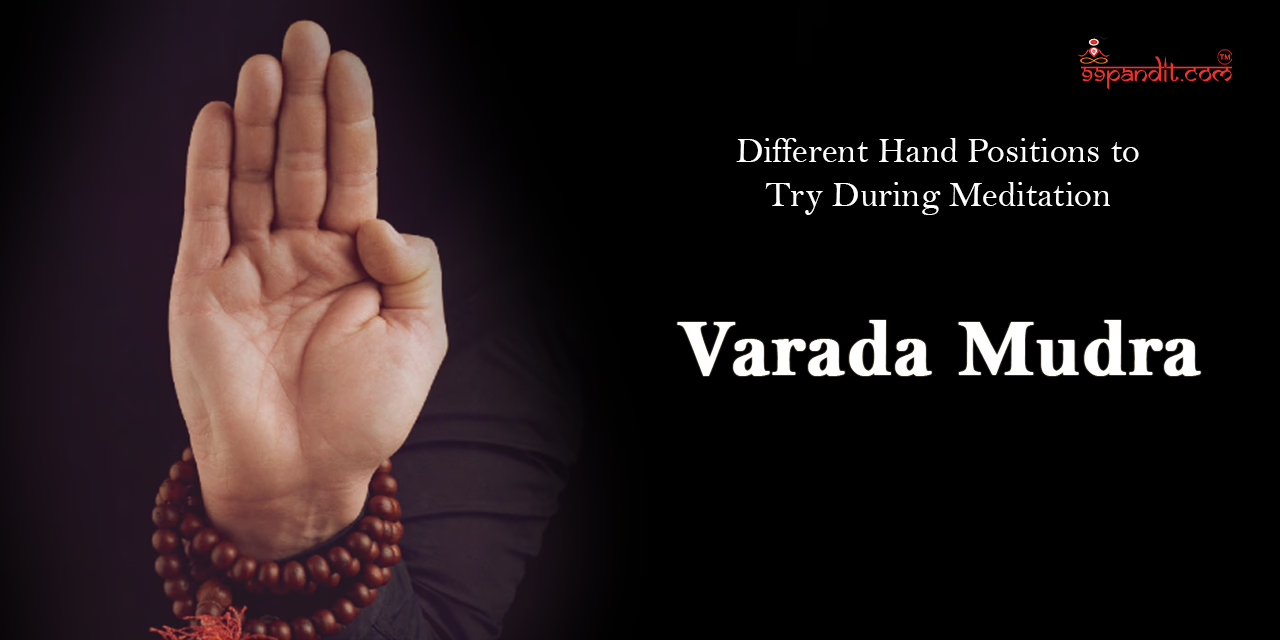
The term Varada means ‘boon giving’ as it is performed to achieve abundance, generosity, compassion, and charity. It shows a giving and also a giving.
How to do it:
Take the back of your right wrist on your thigh with your right hand, open the palm, and gently extend your fingers down toward the earth, hence the palm of your hand faces away from you.
1. Samadhi Mudra:
Showing complete focus and a state of bliss, the mudra consists of folding the hands in your lap, palms up, with one hand resting on top of the other.
It signifies the unity of one’s soul with the universal soul and is believed to encourage deep meditation.
2. Palms down:
Keeping your hands on your knees with your face downward represents grounding. The feature is believed to calm energy and get a deep sense of connection to the earth, which can increase meditation.
3. Ganesh Mudra:
This is named after the Hindu deity Ganesha, who is worshipped for removing problems.
This mudra requires clasping your hands in front of your heart, putting your elbows outward.
This is believed to deepen the heart, enhance confidence, and eliminate internal and external hurdles to success.
4. Bhairava Mudra:
This mudra includes one hand in the palm of the other hand in your lap and is believed to offer a sense of security and internal balance.
The position is usually used for deep concentration and reflection, as it can enhance a feeling of safety and stability.
Basically, you have to practice yoga mudras in the pose of lotus, half lotus, or thunderbolt.
To strengthen the experience, mix mudras with ujjayi breathing, taking 12-15 breaths while holding each position. Keep your attention on the flow of energy inside.
Once the practice is done, sit with your eyes closed. You must think that your mind has powerfully calmed down, and you have minimal thoughts.
Looking for the right hand gesture includes knowing your personal needs and goals, as each hand position gives a precise goal and targets various aspects of physical, mental, and emotional health. There, you can choose which mudra would be perfect for you.
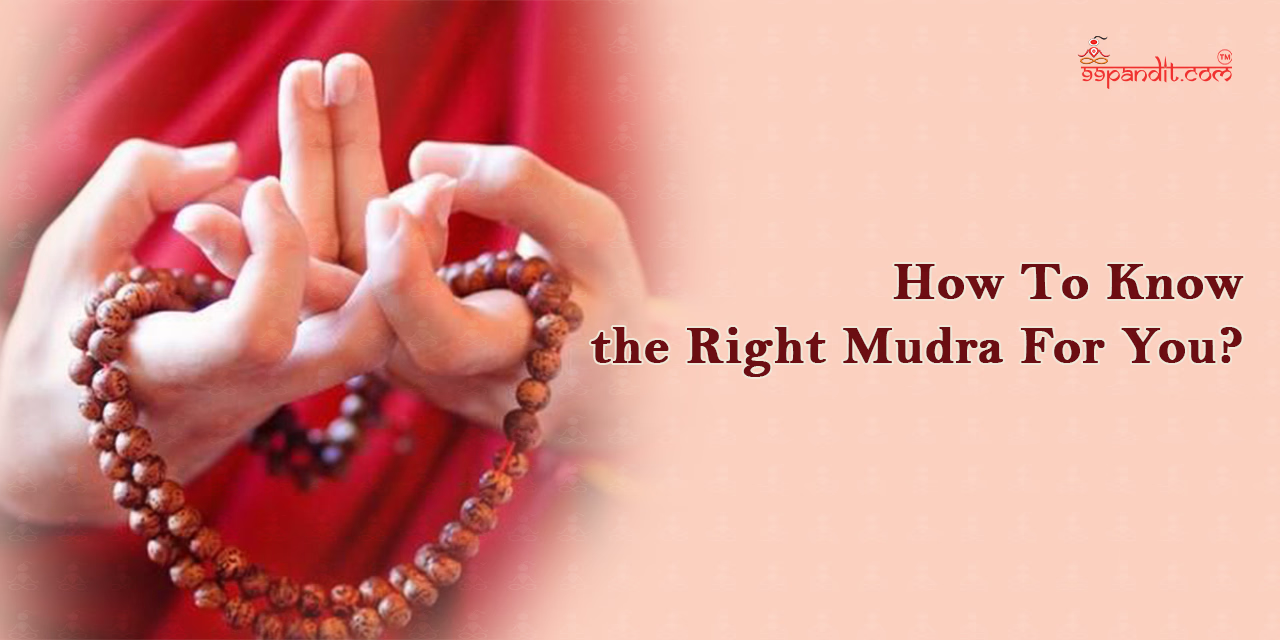
Reflect on Your Needs: Think about what your goal is with the yoga or meditation practice. Are you seeking to lower stress, enhance focus, improve creativity, or heal from specific health problems?
Find Different Mudras: Find the different mudras and their advantages. There are different resources can find, along with books, online resources, and videos, which share the reasons and techniques of many mudras.
Practice Regularly: Try performing multiple mudras in your practice or yoga sessions. Recognise how each mudra impacts you physically, mentally, and emotionally.
Pay Attention to Sensations: See any changes in how you experience during and after performing a specific practice. Does it help you with calming, focus, and physical discomfort?
By including these gestures in your daily routine, you can improve the flow of these vital forces, supporting physical, mental, and spiritual welfare.
These sacred hand positions are considered a powerful tool in handling the body’s elemental powers, promoting a state of holistic health and harmony.
Mudras are helpful tools that can strengthen your aim, maintain your energies within, and increase your overall health and wellbeing.
Add these hand positions to your regular yoga and meditation routine, which will also incorporate a new dimension to your routine.
Whether you’re in the midst of a yoga session or taking a time of stillness in your day, performing these gestures can enhance mental and emotional well-being.
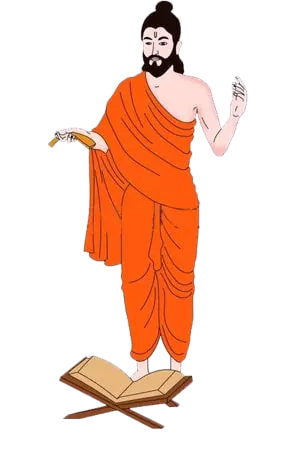
100% FREE CALL TO DECIDE DATE(MUHURAT)

Table Of Content
Filters by categories
All Pujas
Puja On Special Events
Upcoming Pujas
Dosha Nivaran Pujas
Mukti Karmas
Filters by Trending Topics
Filters by Regions
North Indian Pujas
South Indian Pujas